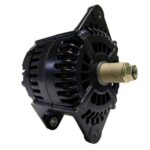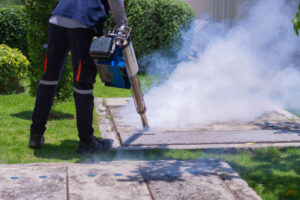Maintaining a ship’s structural integrity is at the core of ensuring safe and efficient maritime operations. For ship maintenance companies in India, understanding common ship hull errors is crucial—not only does timely detection save resources, but it can also prevent catastrophic accidents.
This blog explores the common ship hull problems, their impact on performance and safety, and essential techniques for detection and prevention. We’ll also highlight successful case studies from India to showcase how proactive maintenance strategies can protect vessels from costly repairs and operational downtime.
Importance of Ship Hull Maintenance in India
With its expansive coastline and thriving marine trade, India relies heavily on well-maintained vessels to support its global shipping network. Ship hulls bear the brunt of harsh saltwater environments, heavy load-bearing duties, and extended operations at sea. Without proper maintenance, hull integrity deteriorates, threatening the vessel’s performance, safety, and lifespan.
The stakes for Indian maritime industries and ship maintenance companies couldn’t be higher. Neglecting hull maintenance can lead to severe breakdowns, hefty repair bills, and even tragic naval accidents. Proactive hull inspections and targeted maintenance are vital for safeguarding India’s shipping ecosystem.
Common Types of Ship Hull Errors
Ship hulls face various challenges during their lifetime. Below are the most common hull errors encountered by ship maintenance companies in India and around the world:
Corrosion
Corrosion is one of the most widespread and damaging issues affecting ship hulls. Prolonged exposure to saltwater, varying temperatures, and oxygen causes metals in the hull to corrode. This is especially an issue for steel hulls in older and larger vessels.
Types of corrosion include:
- Uniform Corrosion: Even deformation of the entire hull surface.
- Localized Corrosion (Pitting): Formation of small, deep pits that erode the hull structure over time.
- Galvanic Corrosion: Occurs when two dissimilar metals make contact in the presence of an electrolyte.
Corrosion weakens the hull’s structural integrity, making it prone to leaks or catastrophic failure under stress.
Cracking and Fractures
Structural cracks are serious issues that pose significant safety risks, especially during heavy loads or rough seas. These typically occur due to:
- Poor welding work during ship construction or repairs.
- Fatigue results from repetitive stress over time.
- Overloading or sudden impacts during shipping operations.
Fouling
Fouling happens when marine organisms such as barnacles, algae, and mussels adhere to the ship’s hull. While not directly a structural issue, fouling adds extra weight and drag on the boat, drastically reducing fuel efficiency. Over time, the additional stress caused by fouling can lead to other hull-related issues.
Dents and Deformations
Collisions with harbor walls, floating debris, or even other ships can cause dents or deformities in the hull. These compromise the vessel’s hydrodynamic efficiency and might lead to localized weak spots susceptible to further damage.
Coating Deterioration
Hull coatings act as protective barriers against corrosion and fouling. Over time, these coatings deteriorate due to wear-and-tear and chemical reactions with the sea environment. A damaged coating leaves the hull exposed to the elements, exacerbating other common problems.
Impact of Hull Errors on Ship Performance and Safety
Ignoring hull errors can severely affect ship performance, passenger and crew safety, and operational costs.
- Reduced Fuel Efficiency
Problems like fouling and surface deformations increase drag, forcing vessels to consume more fuel to maintain speed. Inefficient fuel usage drives up operating costs and increases environmental damage.
- Structural Weakness
Cracks, corrosion, and physical damage compromise the ship’s structural integrity, raising the risk of hull breaches or shipwrecks in adverse conditions.
- Safety Risks
Hull errors pose significant safety risks to cargo, crew, and passengers. For example, a cracked hull in rough seas can lead to permanent flooding, endangering everyone on board.
Read more:- Common ship hull problems and how to fix them in India
- Increased Maintenance Costs
Repairs often become more extensive and expensive when hull issues are allowed to fester. What’s more, downtime caused by major repairs can disrupt shipping schedules, further compounding costs.
- Environmental Impact
Damaged hulls increase fuel consumption and the risk of oil spills or hazardous material leaks, damaging marine ecosystems.
Techniques for Detecting and Preventing Hull Errors
The good news is that most hull errors are preventable with a combination of modern technologies, expert practices, and regular maintenance schedules. Here’s how ship maintenance companies in India can stay ahead of these issues:
Advanced Hull Inspections
Regular inspections are the first line of defense against hull problems. Techniques include:
- Ultrasound Technology: Detects metal thickness and stress points.
- Magnetic Particle Testing (MT): Identify surface cracks and fractures.
- Visual Inspections: Cover areas that are easy to access.
- Drone Surveys: Inspect difficult-to-reach areas by flying high-resolution cameras.
Anti-Corrosion Measures
Anti-corrosion measures are indispensable for extending the life of ship hulls. Strategies include:
- Applying high-quality anti-corrosive coatings with specialized properties.
- Installing sacrificial anodes that slow down galvanic corrosion.
- Using corrosion inhibitors mixed with cooling water to prevent hull damage.
Anti-Fouling Technologies
To combat fouling, many shipowners use:
- Biocidal Coatings: Paints containing chemicals to deter fouling organisms.
- Ultrasonic Anti-Fouling Devices: Using ultrasonic waves keeps marine life from accumulating on hulls.
- Fouling Removal Procedures: Use divers or robots to scrape fouling off in dry docks or underwater.
Proper Maintenance of Hull Coatings
Monitoring and reapplying hull coatings ensure the hull remains protected against corrosion and fouling. Keep track of coating durability using advanced polymer-based solutions for better results.
Preventive Maintenance
Scheduling periodic inspections and targeted repairs prevents the escalation of hull errors. Digitized maintenance systems can help automate regular checks, ensuring nothing is overlooked. Based on operational data, AI-based models can even predict the likelihood of future hull issues.
Case Studies of Successful Hull Maintenance Strategies in India
Case Study 1 The INS Vikrant
The INS Vikrant, an aircraft carrier built with Indian expertise, exemplifies the power of proactive maintenance. Leveraging regular inspection protocols and modern materials like composite hull coatings, the airline remains seaworthy and battle-ready despite wear and tear from extensive deployment.
Case Study 2 The Mumbai Dockyard Initiative
Ship maintenance companies at the Mumbai Dockyard adopted an AI-powered hull monitoring system for aging vessels. Regularly assessing critical risk areas has reduced maintenance costs by 20% while improving fleet safety and reliability.
Why Proactive Maintenance is a Must for Ship Maintenance Companies in India
India’s maritime future depends on ensuring its fleets are always in perfect condition. For ship maintenance companies, detecting and addressing hull errors before they escalate is not just good practice; it’s essential. Proactive maintenance ensures safer operations, cost efficiencies, and a reduced environmental footprint.
Don’t wait to tackle hull issues; stay one step ahead. Invest in regular inspections, advanced materials, and state-of-the-art tools to protect your investments and enhance maritime safety.
- Ship Hull Mistakes Every Maintenance Firm Should Know
- Learn about common ship hull problems, their impacts, and how maintenance companies in India can ensure vessel safety. Prevention tips and case studies included.
- Ship Hull Mistakes
Related posts:
 How Suspension Repair Affects Your Car’s Handling and Performance
How Suspension Repair Affects Your Car’s Handling and Performance
 Corporate Limo Service in Lakewood, TX | Jacks Limo for Business Travel
Corporate Limo Service in Lakewood, TX | Jacks Limo for Business Travel
 Reliable HVAC Repair in Rifle, CO | Smoky Hill Roofing Experts
Reliable HVAC Repair in Rifle, CO | Smoky Hill Roofing Experts
 How to Choose the Best Battery Service for Your Vehicle Near
How to Choose the Best Battery Service for Your Vehicle Near
 Best Mobile Car Mechanics in Guildford NSW – Fast, Reliable & Convenient
Best Mobile Car Mechanics in Guildford NSW – Fast, Reliable & Convenient
 Seu guia para instalar capas de assento TTR 230 como um profissional
Seu guia para instalar capas de assento TTR 230 como um profissional
 Is the Trapstar Jacket Still Worth It in the Resale Market?Is the Trapstar Jacket Still Worth It in the Resale Market?
Is the Trapstar Jacket Still Worth It in the Resale Market?Is the Trapstar Jacket Still Worth It in the Resale Market?
 Not Your Average Alternator: The Medium Duty Truck Power Play
Not Your Average Alternator: The Medium Duty Truck Power Play







